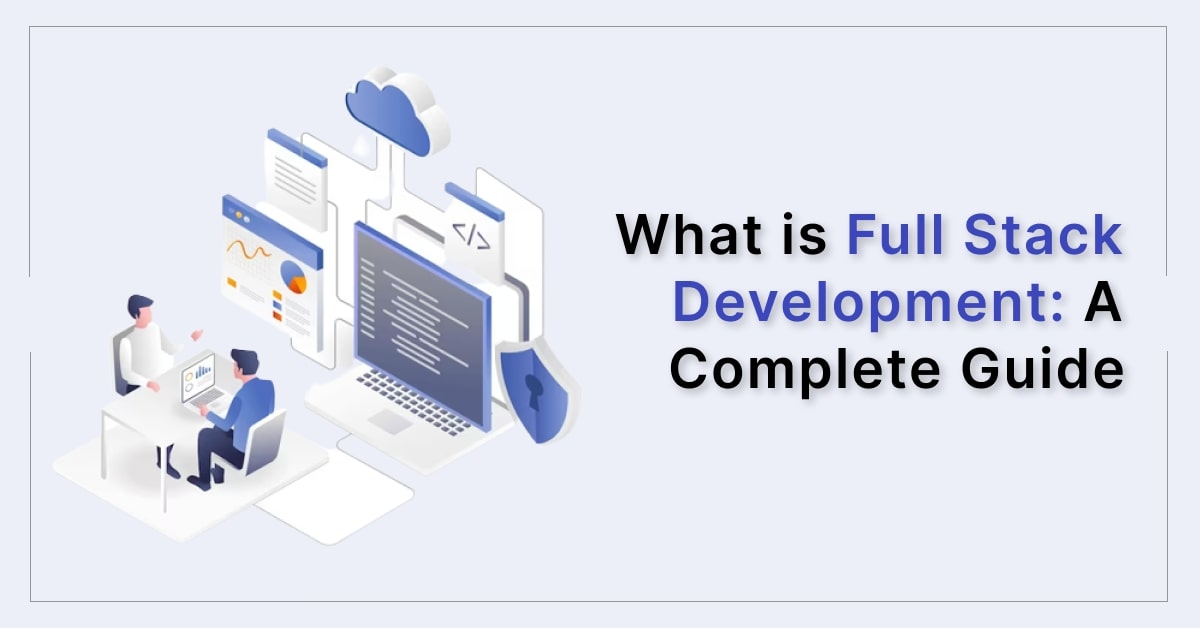Last updated on March 19th, 2024 at 11:11 am
In the current digital landscape, technology plays a significant role in shaping different sectors. Full-stack development services have evolved into a critical discipline in software development.
But what is full-stack development? It defines the ability to function on both the front-end and back-end aspects of web apps. A full-stack developer may have a diverse skill set encompassing an understanding of multiple programming languages, databases, frameworks, and server environments.
This blog will discuss the enthralling aspects of full-stack development. We’ll explore its definition, the critical skills needed, the benefits it provides, and the part it plays in contemporary software development projects.
This guide will give you the skills to successfully navigate the world of full-stack development, whether you’re an ambitious developer hoping to get into the industry or a curious person seeking a deeper understanding.
We are going to do a thorough investigation into full-stack development. You’ll completely understand the idea of becoming a full-stack developer.
Let’s delve deep into it.
What is Full-Stack Development?
Full-stack development is illustrated as developing and maintaining all components of a web app or website. It considers performing on both the client-side (front-end) and server-side aspects of web development.
Front-end development emphasizes developing a website’s user interfaces and user experience. It emphasizes writing the CSS, HTML, and JavaScript code to design and execute the visual elements, layout, and interactivity of the website that a user interacts with directly in their web browsers.
Back-end development considers developing server-side components. It strengthens both web apps and websites. This aspect also involves designing and implementing the server, databases, and app logic for data storage, retrieval, and processing.
Back-end developers often use languages such as Ruby, Python, Java, and Node.js and frameworks such as Spring, Ruby on Rails, Express.js, and Django.
In addition to front-end and back-end development, full-stack developers are proficient in other technologies and tools in web development. These are web servers, databases, version control systems, networking, security, and APIs.
Full-stack developers are proficient in multiple programming languages and frameworks. They can work on both the client and server sides of web apps. They have an extensive understanding of how different elements of web apps communicate and can soundly collaborate with web designers, front-end developers, and other stakeholders to build and deploy the full stack web solution.
It is significant to point out that full-stack development services are an evolving and dynamic field, and the specific technologies and tools involved can differ according to project requirements, industry trends, and the personal choices of developers.
What Features Are Required in Full-Stack Development?
Full-stack development provides different solutions, which may not be suitable for each project. The complexities and needs of a project and the available time and resources must be considered while developing full-stack web apps.
Let’s discuss the core features of full-stack development in detail.
All-Encompassing
Full-stack development services include both front-end and back-end aspects of web development. It indicates that a full-stack developer can handle the tasks associated with user experience, user interfaces, server infrastructure, database management, etc.
A single developer or team specializing in various sectors can streamline the development process and ensure cohesive end products.
Easy Updates
Full-stack development aids developers in creating updates and changes to both the front-end and back-end of web apps. It lets you promptly execute new features, fix glitches, and enhance your web application’s overall functionality.
Budget-Friendliness
As discussed earlier, full-stack developers have a broader skill set and can handle different tasks. This versatility lets businesses save money by hiring fewer developers. Moreover, full-stack developers can perform both sides, front-end and back-end, of projects; hence, they need less coordination and interaction between the development team.
Time and Cost-efficient
Full-stack developers possess a broader category of skills and can handle distinct aspects of development. It can save time and decrease full-stack web development costs because there is no need to hire separate developers for both front-end and back-end activities.
Hire full-stack developers as they can solely manage the entire development procedure, leading to a faster development cycle and adequate allocation of resources.
What Are the Benefits of Full-Stack Web Development Services?
It is significant to point out that while full-stack development services provide different benefits, the suitability of the approach depends on the project requirements and complexities. Evaluating the project needs and available resources is significant to assessing the most feasible strategy.
Let’s find out more about the perks of full-stack development services.
Fast Development Process
Full-stack developers can handle and control each part of the development process on their own. This simplified method lets users speed up the development of web apps and get them to market quickly.
Reduces Cost
Full-stack developers have a wide range of skills and can work on both the front-end and the back-end of a project. It cuts down on the need to hire full stack developers for each part, which could save money for the business.
Well-Versed Solution
Full-stack development makes sure that the process of making a web app takes into account and uses all of its parts. This simplified approach takes into account the user interface, computer infrastructure, database management, security, user experience, etc. It will lead to answers that are well-thought-out and work perfectly.
Full Ownership
Full-stack developers know everything there is to know about the full stack development process. They can be in charge of the full stack project, from making the user interfaces to running the server-side code. It helps people work together and come up with ideas that work well together.
Ongoing Support and Maintenance
Full-stack developers can offer help and upkeep for web application creation on an ongoing basis. Since they know the software better, they can quickly fix glitches or bugs that happen during and after the process of making a web app. It makes the app run more smoothly over time.
Hassle-Free Upgrades
With full-stack development, the front-end and back-end parts of an app are updated by the same developers or team. It makes updating easy and makes sure that all parts of the system work together and are consistent.
Keep Up with the Latest Trends
Full-stack developers are responsible for keeping up with the latest trends and technologies on both the client and server sides of web app creation. It makes sure that web applications use fully useful and up-to-date methods to give them an edge in different fields.
What Are the Challenges Faced By Full-Stack Developers?
It is the most important part of full-stack programming. It takes requests from the client side, processes them, and gives back possible answers. Different systems, like Microsoft NIIS, Apache, or Nginx, can be used to run servers. These servers are in charge of sending requests where they need to go, running app code, and talking to the databases.
Let’s look at some of the most common problems full-stack developers have to deal with.
Project Complexity
Full-stack developers often work on complicated projects with many parts, such as the back-end, front-end, APIs, third-party security, and databases. Managing the difficulty of these projects makes sure that all the parts fit together well. Here, figuring out what’s wrong can be very hard.
Vast and Evolving Tech Stack
Full-stack developers are responsible for working with a wide range of technologies, such as front-end and back-end frameworks, technologies, computer languages, databases, and many more. Keeping up with the constant changes and updates to these technologies can be very hard.
Security Concern
Full-stack developers must be aware of security holes and follow best practices to protect apps from risks like injection attacks, cross-site scripting, and data breaches. So, the creation of the full stack needs to understand and keep up with security standards.
Debugging and Troubleshooting
Finding and fixing bugs, mistakes, and speed problems can be hard and take a lot of time, especially when working with a lot of layers of technology. For full-stack programming, troubleshooting skills and a structured way of testing are important tools.
Time Management
Full-stack developers usually work on both the front end and the back end. It forces them to switch between different tools and jobs. It can be hard for a full-stack developer to manage their time so that they can organize jobs, stay productive, and meet goals.
What Are the Tools and Technologies Used in Full-Stack Development?
It is significant to note that different tools and technologies are used in full-stack development. However, it can vary according to project requirements, industry trends, and personal preferences. Developers often select technologies that integrate with their expertise and project requirements.
Full-stack development services consider a combination of front-end and back-end technologies. Front-end developers use HTML, CSS, JavaScript, and frameworks to develop user-friendly interfaces. Back-end developers work with programming languages, while databases store and retrieve data.
Moreover, servers handle the processing of requests and responses. Understanding these technologies and how they work is essential for full-stack web development.
Let’s look at the tools that are used in each part of full-stack development in more detail.
Front-End Web Development
It focuses on how to make a website’s user features and user experience better. HTML, CSS, and JavaScript are some of the most important technologies used in front-end development. HTML, or Hypertext Markup Language, is the standard markup language used to build the layout and content of web pages.
CSS (Cascading Style Sheets) is used to show how web pages look and how they are put together. It makes decisions about the fonts, colors, styles, and other visual parts of a website. JavaScript is a computer language that lets the client side connect and act in different ways. It lets developers add features like motion, validation, and editing on the client side.
Some frameworks, like Angular, React, and Vue.js, are well-known options for making complicated and interactive web apps. This system makes it easier to build an organized front-end by providing parts that can be used more than once, fast rendering, and state management.
Back-End Web Development
It is used to build computer applications that run on the server. Back-end web development services take into account the business strategy, how the data is processed, and how the front-end and computer talk to each other.
Ruby, Python, Java, and Node JS are all back-end computer languages that are well-known. These languages are used to build the structure of an app, handle requests, and talk to databases.
Databases
In full-stack programming, databases are a very important part. It is used by computer apps to store and get information. MySQL, PostgreSQL, Oracle, and MongoDB are some of the most popular databases.
Developers should know how to set up database models, write effective searches, and make sure that the data is correct. Also, you need to know how to use database management systems like SQLite, MySQL, or MongoDB to store and retrieve data efficiently.
Servers
It is the most important part of full-stack programming. It takes requests from the client side, processes them, and gives back possible answers. Different systems, like Microsoft NIIS, Apache, or Nginx, can be used to run servers.
These servers are in charge of sending requests where they need to go, running app code, and talking to the databases.
Tech Stacks For Full-Stack Development
Full-stack web development includes a variety of tech stacks that a developer can select from based on their project requirements and preferences. These stacks consider integrating programming languages, frameworks, and tools for front-end and back-end development.
By consulting with a full-stack development company, developers can choose their preferred stacks, such as MERN, MEAN, MEVN, LAMP, Django, and Ruby on Rails. These stacks facilitate a core basis for building robust and scalable web apps across the entire development stack.
Let’s discuss it in detail.
MERN
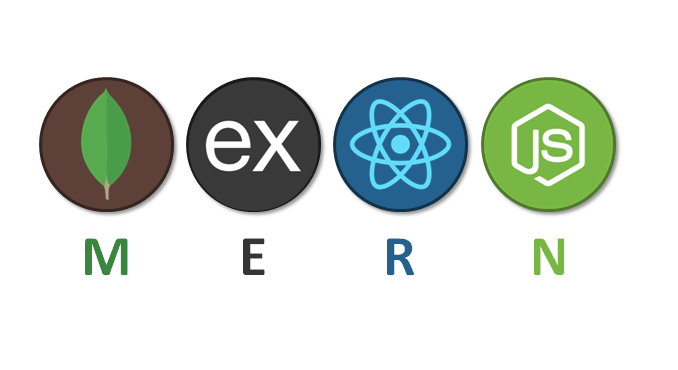

One recognized tech stack is MERN, which stands for MongoDB, Express.js, React, and Node.js. MongoDB is a NoSQL database that permits flexible and scalable data storage. Express.js is a flexible and lightweight web app framework for Node.js that enables the development of robust APIs and server-side logic.
It is a powerful JavaScript library to develop dynamic user interfaces, while Node.js acts as the server-side running environment. This tech stack is recognized for its ability to create high-performance and real-time web apps.
MEAN
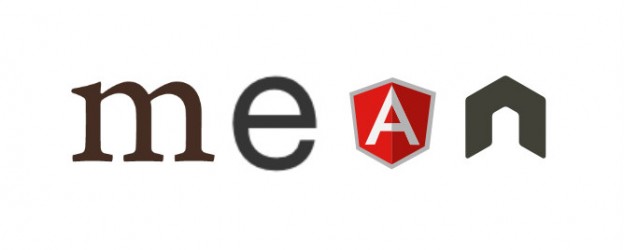

Another popular tech stack is MEAN, which includes MongoDB, Express.js, Angular, and Node.js. Likewise, MERN and MEAN use MongoDB as a database and Node.js as a server-side runtime environment. Express.js is applied to build APIs, and Angular is used to create dynamic and responsive web apps.
The MEAN stack provides a structured and efficient approach to full-stack development. It is also a suitable approach for providing robust frameworks that aid the development of complex user interfaces.
MEVN
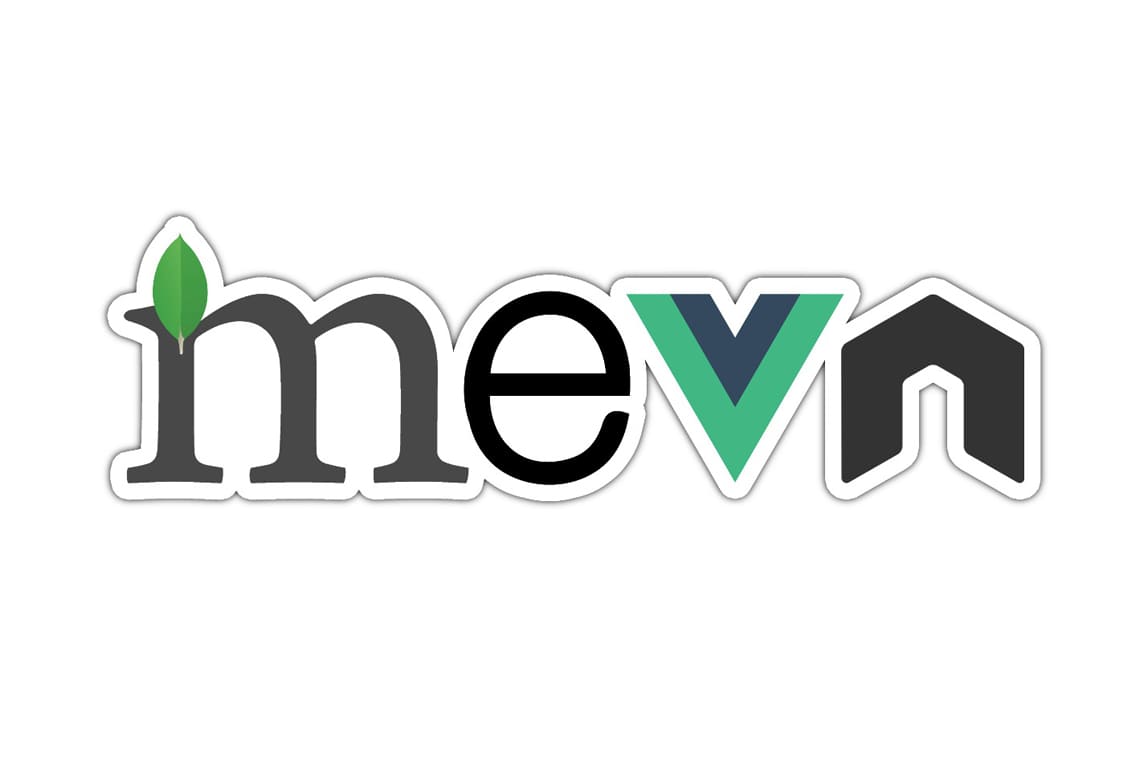

It is another renowned tech stack similar to MERN and MEAN, but with Vue.js, it replaces the React or Angular frameworks. Vue.js is a progressive JavaScript framework that facilitates versatility, better performance, and simplicity.
This full-stack technology integrates Vue.js with MongoDB, Express.js, and Node.js. It is the best fit to develop scalable and efficient full-stack web applications. It is recognized for its intuitive development procedure and the flexibility offered by Vue.Js.
LAMP
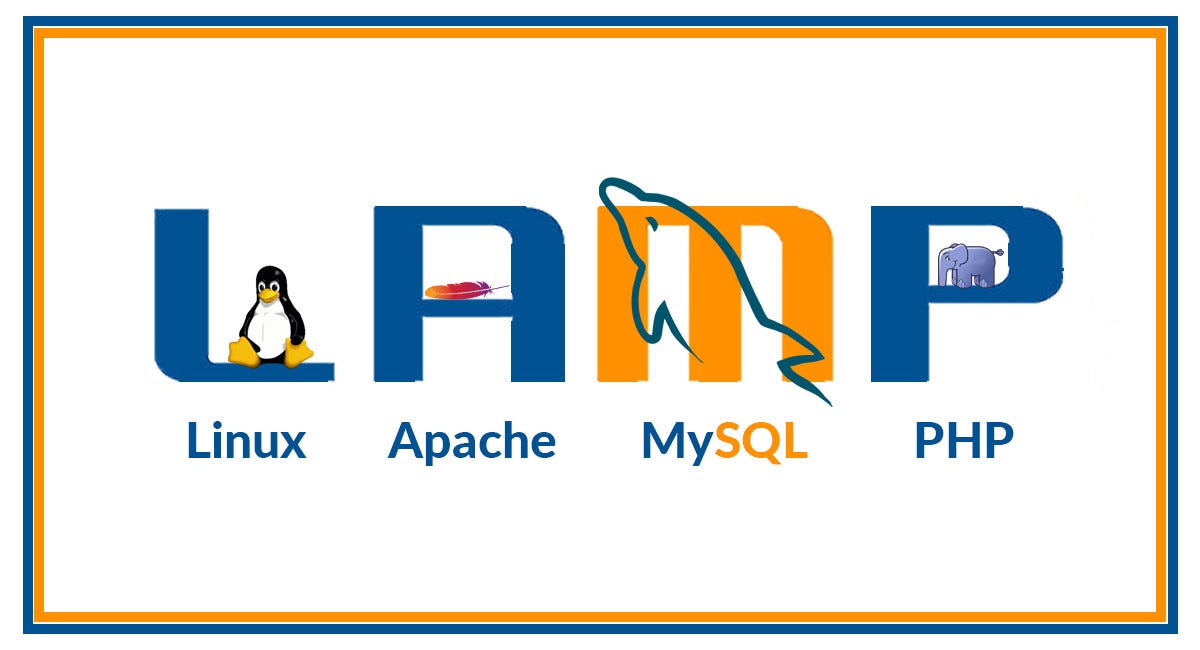

It is a classic and extensively uses tech stacks includes Linux, Apache, MySQL, and PHP/Python/Perl. Lamp is a conventional stack for web development.
Here, Linux is an operating system, MySQL is a relational database management system, and PHP/Python/Perl is the server-side scripting language. LAMP facilitates a stable and mature environment for developing dynamic web apps.
Django


It is a higher-level Python web framework with a model-view-controller (MVC) architectural structure. Django facilitates an inclusive set of techniques and libraries for rapid development. Consequently, it is a recognized choice for full-stack development. It is considered an ORM (object-relational map) used as a database interaction.
The admin interface feels like it handles data and has integral security features. It endorses code reusability, follows the best standards, and is a robust selection for developing scalable web applications.
Ruby on Rails
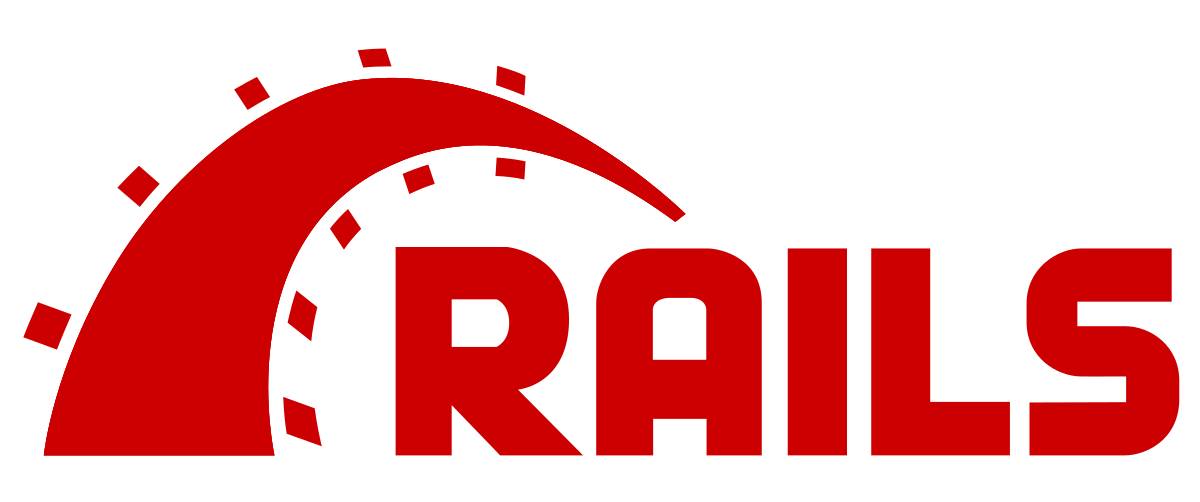

This framework, often known as Rails, is a full-stack web development framework written in Ruby. Rails considers the MVC pattern and focuses on convention over configuration. It lets the developers focus heavily on app logic.
It facilitates a vast ecosystem of libraries and techniques, making it easy to develop database-based back-end web apps. Rails endorses agile development practices and provides seamless database integration and automatic code generation features.
How Do I Become A Full-Stack Developer?
It takes more work and time to become a full-stack developer. You need to pay attention to learning the languages you need, working on projects, and getting more hands-on practice. You need to stay interested and know what’s new in different fields. With constant learning and experience, you may be able to become a great full-stack developer.
We’ve talked about some easy steps you can take to become a full-stack developer.
Step 1: Choose How You Would Like to Learn Full-Stack Development
You have to decide how you want to learn, whether it’s through online lessons, boot camps, or a regular school. Find the tools and sites that offer classes for beginners.
Step 2: Learn the programming languages you need
It would be best to learn HTML and CSS to build the framework and outline of a web page. After that, make sure to highlight the JavaScript that is important for front-end interactions. Trying out front-end frameworks like React, Angular, and VueJS is the best.
Also, you have to choose back-end languages like Python, Ruby on Rails, Java, PHP, or JavaScript. Users must learn how to use systems like MySQL, PostgreSQL, or MongoDB.
Step 3: Make a portfolio for a full-stack developer
Make small projects that show off your skills on both the client side (front end) and the server side (back end). You should think about different projects to show off your skills. As you gain more knowledge, you’ll be able to work on more complicated web apps.
Step 4: Make your full-stack developer resume
Make a resume that shows off your full-stack development skills, schooling, and applicable work or jobs. You need to include a link to your online resume. Personalize your resume for each job application to show off your skills and the tech they need.
Step 5: Get ready for your full-stack development interview
You need to test your problem-solving skills and knowledge in order to get ready for the expert interviews. Practice answering common interview questions about both the front end and the back end of full-stack development.
Developers need to know the rules, methods, and tools used in their field. Also, the best way to improve your skills would be to learn how to code.
Skills Required for Full-Stack Development
To be a good full-stack developer, you need to think about a wide range of skills. Let’s look at some of the most important skills that full-stack developers need.
Front-End Development
It’s important to know how to use front-end technologies like CSS, HTML, and JavaScript. You must know a lot about flexible web design, user interface (UI) development, and well-known front-end frameworks like React, Angular, or Vue.js.
Back-End Development
Knowledge of back-end development is significant for full-stack developers. You must be proficient in at least one server-side language, such as Java, Python, PHP, or Node.js. Moreover, developers must understand different concepts such as server-side rendering, API development, and server management.
Access to Web Servers and APIs
For full-stack programming, it’s important to know how web services and APIs work. You must know how to set up a server, handle HTTP calls, and work with GraphQL or RESTful APIs. Server-side tools, such as Express.js or Django, are important for developers to have.
Database Management and SQL Queries
Full-stack developers often store and collect data from databases. Database management tools like SQL, MySQL, PostgreSQL, and MongoDB are important for full-stack developers to know.
You must know how to write SQL searches, understand how databases are put together, and be able to manage the database’s speed.
Version Control
You need to know how to use version control systems like Git, which is better for developing with other people. When working on projects with various developers, you need to know how to merge, split, and handle disagreements. It would be best to know how to use platforms like Github or Bitbucket, which are important for sharing code.
Basics of Designing
Full-stack developers need to know about design concepts and the user experience, but they don’t have to have this skill. It lets you make applications that look good and are easy to use. It’s helpful to know how to use design tools like Adobe XD or Sketch.
In addition to professional skills, full-stack developers must have the following soft skills: Let’s talk about this in more detail.
Communication
Good speaking skills are important for working with other people on a team, understanding what a project needs, and explaining scientific ideas to people who don’t know much about them.
Problem-Solving
Full-stack developers look at different problems, and it’s important that they know how to look at problems, break them down into doable jobs, and find a good answer.
Continues Learning
Full-stack programming is a field that is always growing. It teaches people to keep learning and keep up with new systems and technologies that are good enough to keep up with changing industry trends.
Time Management
Full-stack developers often work on different projects and jobs at the same time. Developers must be able to put jobs in order of importance, keep track of resources, meet goals, and work quickly. It is a good choice for getting a job done well.
By working on and improving these technical and soft skills, you could become a well-rounded full-stack developer who is able to handle all the different parts of building web applications.
Future Trends in Full-Stack Development
Full-stack web development is continuously emerging due to different factors. Here, we will evaluate future trends that shape the full-stack development environment.
Microservices
Microservices are becoming a popular choice because they make it possible to build complicated apps by breaking them up into smaller pieces and letting a few services handle them.
Full-stack developers will need to know a lot about tools like Docker, Spring Boot, and Kubernetes in order to build, launch, and handle apps that are built on microservices.
Serverless Architecture
Serverless computing is becoming more popular because it lets developers focus on writing code instead of managing servers. With service design, developers can use cloud or serverless tools like Azure Function and AWS Lambda to build and launch the app. This trend could make it easier to handle equipment and also help it grow.
Artificial Intelligence (AI) and Machine Learning (ML)
AI and MI technologies are being added to more and more apps. Full-stack developers need to know that AI/ML frameworks and tools like PyTorch or TensorFlow will be in higher demand for making intelligent apps that use natural language processing, computer vision, and suggested choices.
Progressive Web Applications (PWAs)
It combines the best parts of web apps and mobile apps to give users a better experience and also work offline. For full-stack developers to be able to make PWAs, they need to know about different technologies like web app manifests, service developers, and flexible web design. It can work on many devices and systems without any problems.
Cybersecurity
As online risks grow every day, full-stack developers need to know a lot about how to keep data safe. It looks at things like using safe code techniques, understanding how login and authorization work, and keeping up-to-date on security flaws and how to fix them.
Blockchain Technology
It’s not just for cryptocurrencies because it has the ability to change many fields. Smart contracts and independent apps can be made by full-stack developers who know how to use blockchain platforms like Hyperledger or Ethereum Fabric.
Low-Code Development
This tool is getting more and more popular, and it lets developers make apps quickly and with little code. Along with this, full-stack developers would have to learn how to use these sources to speed up the development process and make the testing better.
Hence, it is significant for developers to stay updated about these full-stack web development trends. Developing continuous learning about new technologies and evolving industry demand leads to remaining competitive in different sectors.
Conclusion
Full-stack web development is a versatile, complex discipline that embraces developers to develop end-to-end solutions. It considers both front-end and back-end development solutions. Also, develop an understanding of different databases, APIs, and technologies.
A full-stack developer is flexible enough to work on various parameters of software apps. They focus on designing the user interface to handle the server-side logic and infrastructure.
By specializing in multiple platforms and technologies, full-stack developers can fill the gap between diverse development teams and ensure the complex project’s smooth functioning.
This blog develops an understanding of what full-stack web development considers. Whether you choose the full-stack development features or build your knowledge on tips to create a full-stack app, this guide will help you.
FAQs
What does “full-stack development” mean?
Full-stack development is illustrated as the ability to work on both platforms, such as the front-end and back-end aspects of the software app. Hire full-stack developers, as they are specialized in different programming languages, frameworks, databases, and server environments. It enables them to handle different layers of the app development process.
What skills do you need to be a full-stack developer?
A full-stack developer requires distinct skills, such as proficiency in front-end technologies such as CSS, JavaScript, HTML, and back-end technologies, server-side programming languages, and databases like MongoDB. They must understand the version control system, web servers, software development tools, and API integration.
Which is the best language for a full-stack developer?
There is no single best language for full-stack development services because it relies on project requirements, personal preferences, and industry trends. However, some popular programming languages for full-stack development are JavaScript, Ruby, and Python.
How do I become a full-stack software developer?
Follow the given steps to become a full-stack software developer:
- It would be best to start by learning the basics of HTML, CSS, and JavaScript for front-end development.
- Improves the specialization in back-end programming languages such as Ruby, JavaScript, or Python.
- Learn recognized frameworks and libraries for both front-end and back-end development.
- You may familiarize yourself with the databases, APIs, and server systems.
- Work on individual projects and contribute to open-source projects to increase the hands-on experience.
- Continuously learn and stay updated about the latest technologies and trends in full-stack development.
Are full-stack developers in demand?
Yes, stack developers are in higher demand in the tech sector. They have a specialization in both front-end and back-end tasks. It provides valuable resources for a company. Hire full-stack developers because they can work on projects solely and collaborate with the specialized developers.



Naveen Khanna is the CEO of eBizneeds, a company renowned for its bespoke web and mobile app development. By delivering high-end modern solutions all over the globe, Naveen takes pleasure in sharing his rich experiences and views on emerging technological trends. He has worked in many domains, from education, entertainment, banking, manufacturing, healthcare, and real estate, sharing rich experience in delivering innovative solutions.
